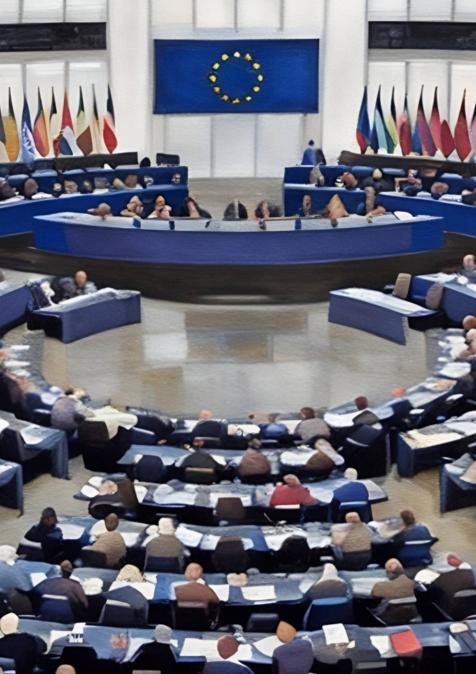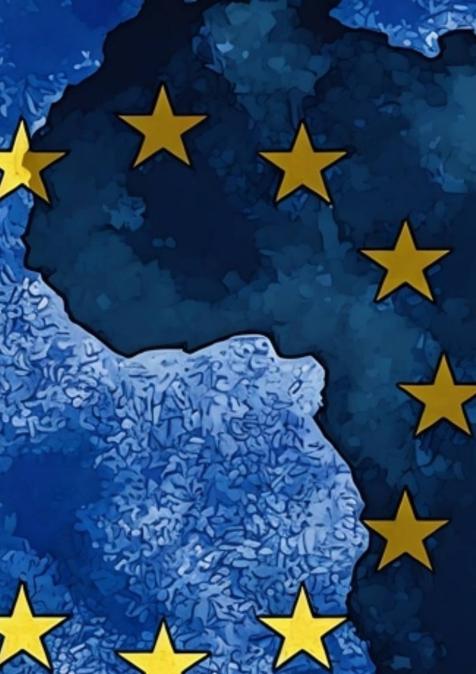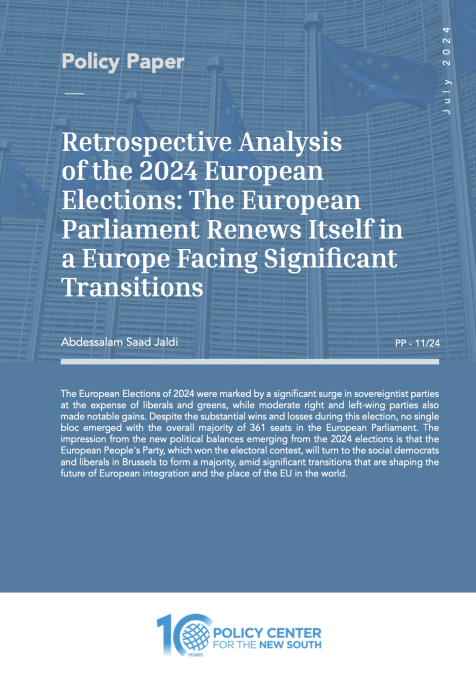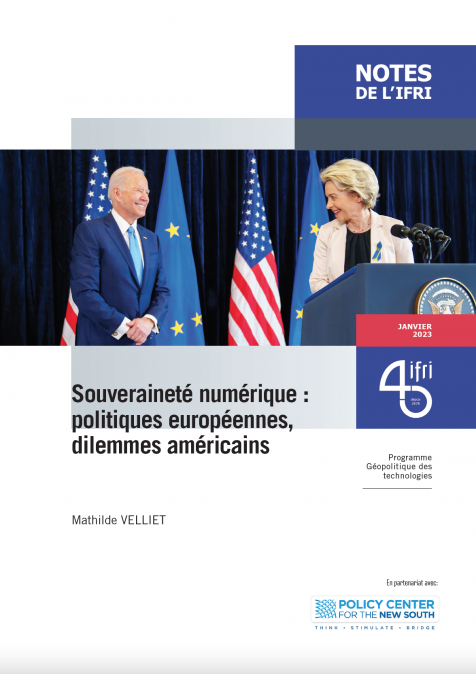Publications /
Opinion
A direct threat
Is history repeating itself? That was the question circulating at NATO headquarters in Brussels as officials observed a joint Russian-Belarusian strategic exercise held in Belarus last September, Ukraine’s neighbor and Moscow’s staunch ally.
We recall September 2021, when Russian troops and their allies (an estimated 200,000 soldiers) conducted similar exercises near Ukraine’s border. When the drills concluded, Russian forces did not withdraw; twenty-three weeks later, they invaded Ukraine. The recent September exercise was the first of its kind since that invasion and even involved the Russian enclave of Kaliningrad, bordering Lithuania and Poland. Officially, it was described as routine, a standard strategic exercise, though notably, it included the simulation of a nuclear strike.
Soon after, tensions escalated. Nineteen drones launched from Belarus entered Polish airspace, intercepted by Dutch and Polish fighter jets. Some were shot down; others crashed, later identified as Russian-made. This marked the first direct military confrontation with Moscow since the full-scale invasion of Ukraine. NATO denounced it as an “unprecedented and brazen incursion.” The incident was followed by three low-flying Russian jets that appeared to simulate an attack on “Petrobaltic,” a Polish oil platform anchored in the Baltic Sea. Italian F-35 fighters stationed at Amari Air Base in Estonia intercepted the Russian MiG-31s, which had switched off their transponders and ignored communication attempts.
More violations followed. Russian jets circled over Tallinn, Estonia’s capital, while drones crossed into Romanian airspace. “Such violations are totally unacceptable,” declared Estonian Prime Minister Kristen Michal, who invoked Article 4 of the NATO Treaty, calling for consultations among member states. “For Estonia, for Poland, for Lithuania,” added Estonia’s Defense Secretary Dovile Sakaliene (Fox, September 21, 2025), “for all of us on NATO’s eastern flank, this is a direct threat, not only to our territorial integrity but to the safety of our citizens.”
Polish Prime Minister Donald Tusk similarly urged NATO to invoke Article 4 of its founding treaty, which states that “the parties will consult together whenever, in the opinion of any of them, the territorial integrity, political independence, or security of any party is threatened.” As Euronews reported, NATO officials have noted “an ever-increasing testing of borders and aggressiveness,” repeatedly condemning Russia’s “reckless behavior.”
While Donald Trump did not order the 8,000 U.S. troops stationed in Poland or the 2,000 deployed in the Baltic states to respond, he admitted, “I do not like it when it happens; it could be big trouble.” Tusk reassured Europeans that there was “no reason to claim we are in a state of war,” but he warned that the provocation “crosses previous boundaries and is incomparably more dangerous for Poland than any earlier incidents.” Russia, it seemed, was testing NATO’s unity and readiness.
A Full-Scale Attack on a NATO Member?
According to Oleg Dunda, a member of Ukraine’s parliament, a potential Russian offensive against the Baltic states might not involve a single tank. Instead, he warned, it could begin with communication blackouts, drone strikes on infrastructure, and unmarked troops attacking civilian convoys. “Estonia, Latvia, and Lithuania,” he suggested, “may simply wake up one morning as part of Russia, without a single NATO shot fired.”
The question remains: Would NATO’s mutual defense guarantee under Article 5 truly apply if Moscow occupied “just” part of Latvia or a few miles of Polish territory? Would Europeans, and Donald Trump, be prepared to fight for Estonia’s 1.3 million citizens? And what if the U.S. president were to drastically cut the Pentagon’s $842 billion budget or even withdraw from NATO altogether?
Fearing such unpredictability, NATO members have set an ambitious goal: by 2035, each will allocate 5% of GDP to defense. Poland, bordering both Russia and Ukraine, already spends 4.1%, the highest among NATO members, even surpassing the United States. Estonia follows with 3.4%. Germany, aiming to modernize its aging military, has pledged €100 billion in new defense investments and introduced legislation to reintroduce mandatory military service, as many Bundeswehr soldiers and their equipment are now outdated.
According to Fox News, NATO has likely been on high alert since Russia’s 2022 invasion of Ukraine, but the recent surge in airspace violations has deepened concerns that a war with Moscow is “no longer theoretical but inevitable.” The Week similarly warned that a “full-scale attack on a NATO member is not as far-fetched as it might seem.” Germany’s Inspector General, Carsten Breuer, reported that Moscow is now producing hundreds of tanks annually, enough to launch an assault on a Baltic nation by the end of the decade, or on any of its neighbors, including Finland (with a 1,271 km shared border), Norway (195 km), or Poland (210 km), once dominated by the Soviet Union. Analysts suggest that Russia could seize limited territories in an initial strike before NATO could mount a full collective response.
Growing Intimidation
French President Emmanuel Macron reacted firmly to Russia’s incursions into NATO airspace: “We will not yield to Russia’s growing intimidation.” He ordered three French Rafale fighters to Poland to assist with air patrols and reinforce NATO’s eastern defenses.
Meanwhile, the United States strengthened its presence. A permanent battle group base was established in Orzysz, near the Russian enclave of Kaliningrad, supported by Croatian rocket artillery and British reconnaissance units. U.S. Air Force Lieutenant General Alexander Grynkewich, appointed in June 2025 as NATO’s top air commander, pledged to “defend every inch of NATO territory” (September 13, 2025).
In 2022, Washington established the “V Corps Forward Command” in Poznań, the first permanent U.S. Army headquarters on NATO’s eastern flank, to coordinate American ground forces in Europe. The Aegis Ashore missile defense base became operational in November 2024, forming a key element of NATO’s shield against missile threats. The U.S. has also stationed armored brigade combat teams, F-16 aircraft, and MQ-9 Reaper drones across Poland and the Baltics.
Germany, for the first time since World War II, has deployed a permanent brigade outside its territory: 5,000 troops from the 45th Panzer Brigade are expected to reach full combat readiness by 2027. However, analysts caution that it will take years for them to match the combat experience of Ukrainian forces hardened by attritional warfare.
To counter the growing drone threat, former Lithuanian Prime Minister and current EU Commissioner for Defense Andrius Kubilius urged NATO and the EU to “urgently develop a drone wall along the entire eastern flank,” calling it “the most important common flagship project” (CNBC, September 11, 2025). This initiative, dubbed Eastern Sentry, focuses on countering drone and missile threats. As The Guardian concluded, “Whether it will deter Russia from similar acts in the future remains far from certain.”










